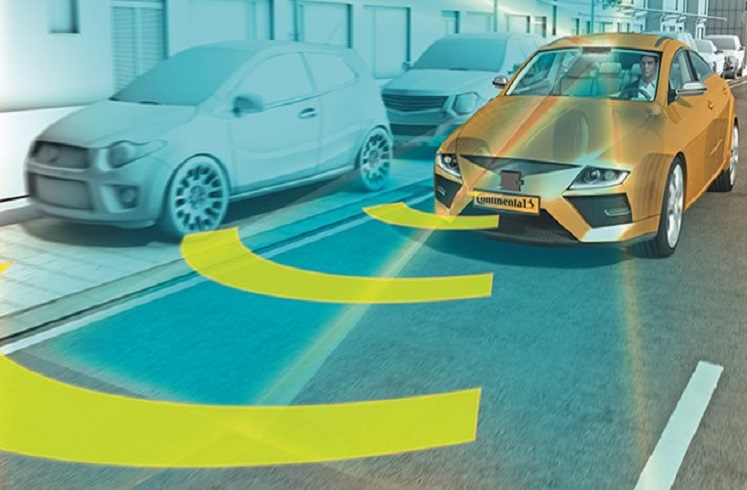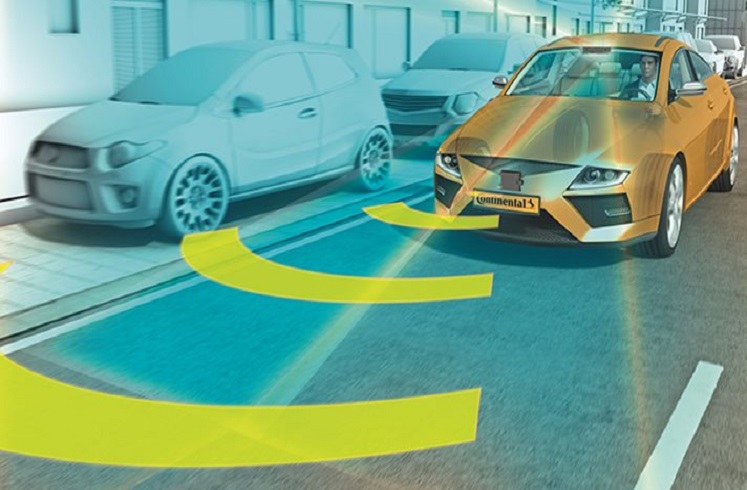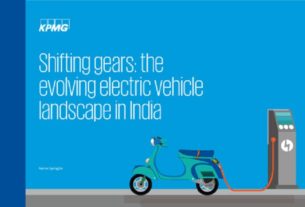Exclusive article written by Sudeepth Puthumana, Head of Engineering, Passive Safety and Sensorics business unit (Autonomous Mobility and Safety), Continental Automotive India.

Delhi’s Air Quality Index (AQI) has gone over 400, and this condition exists in many places in India. There are regions where the AQI has reached a deadly 700. It is just an indicator of how deeply the environment is impacted by the emissions produced. Though not entirely, vehicles play a critical role in generating emissions and affecting the environment in clusters with dense populations and relative traffic. While it might take some time to move to a zero-emission vehicle, EVs are undoubtedly the more sustainable option and produce fewer lifecycle emissions. Moreover, the operating cost of an EV is way more cost-effective than ICE engines.
To further the transformation towards EVs, India has launched schemes like FAME I, FAME II, and various tax sops to promote electric vehicles. The advantages and the government push have stirred motivation to a certain extent among the consumers to adopt electric mobility. However, there are still a few inhibitions about EVs, like ‘how safe are electric vehicles?”
Safety has always been one of the primary concerns for EVs. To ensure electric vehicles’ safety and to realize Vision Zero – zero fatalities, zero injuries, zero crashes, the industry is working on multiple levels. The first is to design specific technologies for EVs. The transformation to an EV is more than the transformation of the powertrain; the entire vehicle architecture is changed. As an outcome, this requires new technologies developed just for EVs. For instance, special braking systems are designed specifically for EVs. The second level is to further safety standards. Electrified, automated, and connected mobility has opened doors for so many innovations.
Brake Systems: Energy Efficient and Sustainable Technology
While designing braking systems for EVs, several critical issues are to be addressed, including but not limited to how the system will work with the other components. The technology should also be energy-efficient and help in reducing emissions.
The ‘One-Box Brake-By-Wire Solution’ aims to address this requirement. Several functionalities are coupled to make this brake-by-wire solution more space-efficient and energy-efficient. The ‘One-Box’ system integrates the brake actuation, the brake booster, and the control systems into a single, compact, and weight-saving module. They also help in reducing carbon emissions. Let’s take an example of the MKC1 solution. It helps reduce CO2 emissions of hybrid electric vehicles by around 5 g/km and also extends the electric range of all battery-powered vehicles with savings of about 30 percent regenerative energy.
Electric Parking Brakes (EPB) will take center stage in electric vehicles. A simple button activated system will replace the conventional lever-operated hand brakes. Not just EPB saves a lot of space and further helps in reducing the vehicle’s gross weight. It is also a better alternative for enhanced and accurate braking. It has the functionality to hold the vehicle stationary on grades and flat roads. EPB is activated with a simple press of a button, and the brake pads are electrically applied, enabling the hold functionality.

Intelligent Battery Sensor: A Must-Have for EVs
Intelligent Battery Sensor (IBS) is an ancillary safety component that continuously monitors the lead acid and lithium-ion battery’s prime parameters. The sensor provides data on State-of-Charge (SOC), State-of-Health (SOH), State-of-Function (SOF) of the battery. The IBS feature helps in avoiding sudden vehicle breakdowns by delivering timely warnings of the battery state. The sensor system is combined with the regenerative brake systems to execute safety functions. EVs primarily work on motors, unlike engine-based ones, making this feature all the more necessary in electrically driven vehicles. The sensor is essential in optimizing EV start-stop-start systems’ functioning, resulting in improved battery life and reinforcing CO2 reduction measures.
ESC: Improved Vehicle Stability for Skid Control
Electronic Stability Control (ESC) is a principal safety system that improves the driver’s control over a moving vehicle’s direction. The system ensures the vehicle stays within safety limits in times of intense steering movements. Loss of control may result in crashes or rollovers. ESC is capable of preventing such incidents. Sensors are employed to monitor deviations in the position of the steering wheel and direction of travel. When the data is picked up, ESC systems help maintain control by stabilizing the vehicle when oversteered by slowing down the outer wheels. The system is also capable of managing brakes applied by the driver at times of loss of control. The Understanding situation is overcome by applying brakes on the inner wheels. The linking of an external ESC unit into the existing architecture of the low-weight EVs poses a design challenge to attain stable operation. A boost in the effective implementation efforts has been witnessed in the auto world. ESC is a basis for other safety technologies such as driver assistance systems. ESC has a fast response time that gets triggered when control over the vehicle is lost.
Tire Pressure Monitoring System: Critical for Safety of EVs
Maintaining tires in good condition is essential for vehicle longevity, improved safety, vehicle performance, and comfort driving. Tire Pressure Monitoring System (TPMS) is a crucial feature in vehicles to elevate safety. TPMS functions by monitoring tire conditions in a timely approach. The system displays warnings on the dashboard for the driver to view, based on real-time data received by wheel sensors. The signals help in making the driver aware of possible tire failures and avoid mishaps. TPMS units aid EVs in strategizing energy-efficient travel based on the car’s payload data and battery levels, contributing to range betterment. The monitoring system aids in optimizing tire productivity, increasing fuel efficiency rates, and increasing cost-efficiency in addition to improved road safety.
CoSSy: Protecting the Electric Vehicle
The CoSSy detects contact between a vehicle and a person or object at cutting speed. The recording of sound signals by CoSSy can be used to detect collision impact at low speed so that the vehicle can be stopped immediately. Once installed, the CoSSy sensor signals can support many other applications, such as detection of vandalism (scratching, dents), slow parking knocks, recognition of the road condition, driver identification by voice, or detection of approaching emergency vehicles. CoSSy helps to make applications like automated parking safer.

OcSM: Improving passengers’ safety by reducing the crash impact
Occupant Safety Monitor technology (OcSM) is an innovative solution that enhances the vehicle’s passive safety system. OcSM monitors the interior with the help of a combination of imaging sensors such as a camera and Radar enabling a complex sensor fusion model, through which optimum deployment strategies for the restraint systems are spontaneously calculated for each occupant. For instance, based on the pose of the occupants inside a vehicle airbag deployment timing can be adapted. With the advent of automated driving, the occupants have the freedom to do a wide range of activities compared to a conventional vehicle commutation. This increases the complexity of safety measures and here is where OcSM will have a vital role to play by ensuring optimum restraint safety, in an occupant centric approach.





